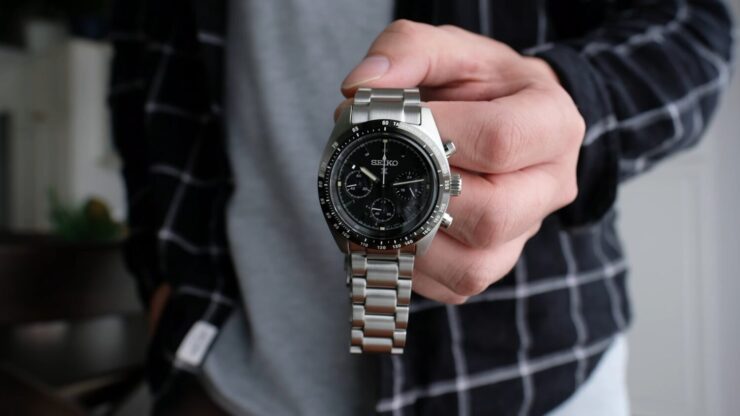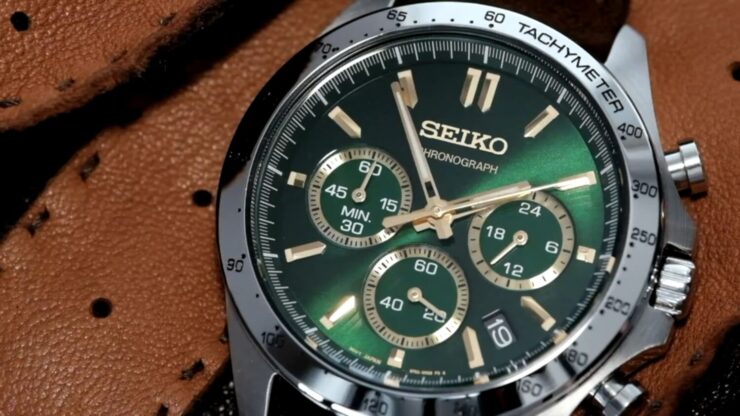In the world of horology, Seiko has carved a prominent niche for itself with its innovative timepieces. Among its impressive lineup, the Seiko Solar Watch stands out as a testament to the brand’s commitment to technological advancement and sustainability.
This article delves into the intricacies of Seiko Solar Watches, exploring their longevity, the underlying technology, and whether they truly offer value for money.
Evolution

Traditional watches have long relied on battery-powered quartz movements to maintain accurate timekeeping. However, with the advent of solar technology, watchmakers began to explore alternative energy sources to power their timepieces. Seiko, a pioneering Japanese watch manufacturer, took this innovation a step further by introducing solar-powered watches, leveraging both precision timekeeping and eco-conscious design.
How They Work
Seiko Solar Watches operate on a simple yet ingenious principle: harnessing light energy to power the timepiece. These watches feature solar panels, often located beneath the watch’s dial, which are designed to absorb various light sources, including sunlight and artificial light. The solar cells convert this light energy into electrical power, which is then stored in a rechargeable battery within the watch.
Longevity and Power Reserve

One of the primary concerns watch enthusiasts have when it comes to solar-powered timepieces is their longevity. How long can a Seiko Solar Watch last, and what factors affect its lifespan?
Seiko Solar Watches are built to endure. The combination of high-quality solar cells and advanced rechargeable batteries ensures that these watches can run for a substantial period. On average, the power reserve of a Seiko Solar Watch ranges from several months to over a year on a full charge, even if kept in complete darkness. This extended power reserve mitigates the need for frequent charging and contributes to the watch’s overall reliability.
However, the lifespan of a Seiko Solar Watch is not indefinite. Over time, the rechargeable battery’s capacity may diminish, leading to a decrease in the watch’s power reserve. Factors that influence battery lifespan include the quality of the solar cells, the type of rechargeable battery used, and the frequency of exposure to light. Nonetheless, Seiko ensures that the rechargeable batteries used in their solar watches are of high quality, minimizing the impact of these factors.
Charging Efficiency and Light Sources

The efficiency of solar-powered watches hinges on their ability to convert light into energy effectively. Seiko Solar Watches are engineered to be efficient in various light conditions. While sunlight is the most potent source of energy, these watches can also be charged using artificial light, making them practical for everyday wear.
Exposure to direct sunlight for around 10 to 20 minutes can provide enough energy to keep a Seiko Solar Watch running for a day or more. However, if the watch has a power-saving mode or is not in use, it can extend its power reserve further. Even indoor lighting, such as fluorescent or LED lights, contributes to charging the watch’s battery. This versatility ensures that the watch remains operational even in less-than-ideal charging conditions.
Durability and Maintenance

Seiko has established itself as a brand synonymous with durability, and its solar-powered watches are no exception. These timepieces are constructed using high-quality materials that are not only aesthetically pleasing but also robust enough to withstand the rigors of daily wear.
Moreover, Seiko Solar Watches often come with features that enhance their longevity. Some models incorporate scratch-resistant sapphire crystals to protect the dial and prevent unsightly marks. Additionally, water-resistant and dive-ready solar watches make for excellent companions during aquatic activities.
When it comes to maintenance, Seiko Solar Watches require minimal attention. Regular exposure to light, whether natural or artificial, suffices to keep the watch powered. However, if the watch has been stored in darkness for an extended period, it may require some time in the light to recharge before functioning optimally again.
Are Seiko Solar Watches Worth It?
The question of whether Seiko Solar Watches offer value for money is a valid consideration for potential buyers. To answer this, several factors come into play:
- Initial Investment: Seiko Solar Watches might have a higher upfront cost compared to traditional battery-powered watches. However, this initial investment can be offset by the long-term savings on battery replacements.
- Longevity: The extended power reserve and durable construction of Seiko Solar Watches contribute to their overall value. With proper care, these timepieces can last for years, reducing the need for frequent replacements.
- Eco-Friendly Design: Seiko’s commitment to sustainability is evident in its solar-powered watches. By harnessing light energy, these watches have a lower environmental impact compared to watches powered by disposable batteries.
- Low Maintenance: The minimal maintenance required for Seiko Solar Watches adds to their appeal. Once fully charged, these watches can operate reliably for months, reducing the hassle associated with regular battery changes.
- Technological Innovation: Seiko’s reputation for technological advancement is upheld by its solar watches. Owning a watch that utilizes solar energy showcases a forward-thinking approach to timekeeping technology.
- Style and Design: Seiko Solar Watches offer a diverse range of styles, from sporty to elegant, ensuring that there’s a design to suit individual preferences and occasions.
FAQs
How long does the battery of a Seiko Solar Watch last?
The battery life of a Seiko Solar Watch varies based on factors such as the quality of solar cells, the type of rechargeable battery, and the watch’s exposure to light. On average, these watches can run for several months to over a year on a full charge, even in complete darkness.
Can I charge my my Watch indoors?
Yes, Seiko Solar Watches are designed to be charged by both natural and artificial light sources. While direct sunlight is the most effective, indoor lighting such as fluorescent or LED lights also contributes to charging the watch’s battery, ensuring that it remains operational even in less ideal conditions.
What happens if it runs out of power?
If your Seiko Solar Watch runs out of power, simply exposing it to light for a period will recharge the battery and restore its functionality. Depending on the watch model, it may take around 10 to 20 minutes of exposure to sufficient light to recharge the watch and ensure accurate timekeeping.
Are they durable and water-resistant?
Yes, Seiko Solar Watches are built with durability in mind. They often feature high-quality materials and design elements such as scratch-resistant sapphire crystals and water-resistant capabilities. Some models are even suitable for diving, making them durable companions for various activities.
Are they worth the investment?
Yes, Seiko Solar Watches offer several advantages that make them a worthwhile investment. They are environmentally friendly, thanks to their use of solar energy and the reduction in disposable battery waste. Their longevity, low maintenance requirements, and diverse styles cater to different preferences and occasions, making them a practical and stylish choice for watch enthusiasts.
Final Thoughts
The Seiko Solar Watch is a testament to the fusion of horological expertise and sustainable technology. With its ability to capture light energy and convert it into reliable timekeeping power, these watches represent a shift toward eco-consciousness in the world of horology.
Their durability, diverse designs, and extended power reserves underscore their value proposition, making Seiko Solar Watches not only a practical choice but also a worthy investment for the discerning watch enthusiast.

